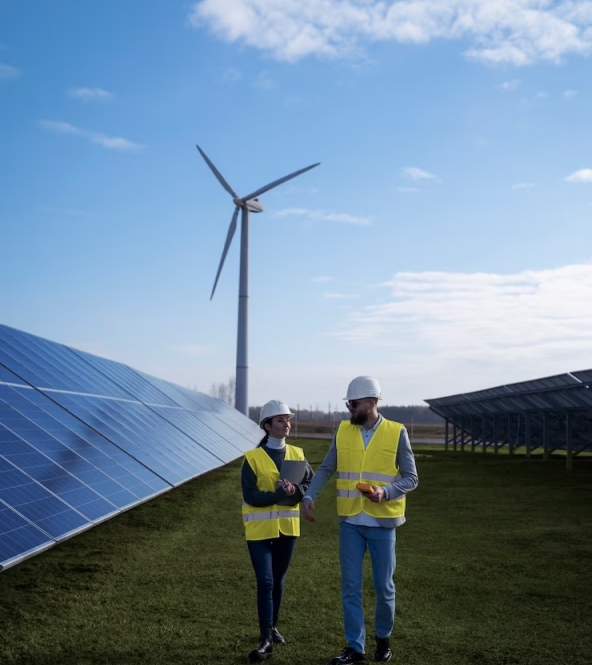Complete Guide to Solar Panel Output

Solar energy is available in abundance on Earth, more than the world needs for consumption. By installing the right solar panels, you can utilise solar energy to power your home or office. The biggest positive environmental impact of solar energy is that it will help reduce the human dependency on non-renewable resources.
However, to make the right choice for your home, you should understand solar panel output and consider the factors that will affect it. We have curated this brief guide to help you understand everything you need to know about solar panel output.
What is solar panel output?
Solar panel output is the average power output (measured in watts) they produce when receiving the maximum sunlight under the best temperature and weather conditions. Solar panels are rated based on the power output they generate in standard conditions. Most of the solar panels available in the market range from 250 to 400 watts. The solar panel output rating shows its capacity to produce electricity.
What factors affect solar panel output?
The factors that affect the power output of your solar panels can be site-specific or geographical factors. Some of the important factors that you should know are as follows:
1. Property and panel direction:
‘What side of the house is best for solar panels?’ is a common question. In Australia, north facing panels are orientated in the best way to get the maximum solar output. If your solar panel direction is east or west, you won’t generate as much solar output, however, you can make the most of your east/west-facing solar panels based on your electricity consumption. If you use more electricity during the mornings, east-facing solar panels will be a better choice, and if you use more electricity in late afternoons, west-facing solar panels will be a stronger option.
2. Solar panel angle:
The angle of your roof and the tilt of your solar panel can affect your solar output. Your solar panel should be aligned to the same latitude angle as your roof. This will ensure maximum sunlight reaches your solar panels’ surface throughout the year.
3. Panel temperature:
If it gets too heated, you will see a drop in the solar panel efficiency over time. This happens with low-quality solar panels, so when buying solar panels, ensure you are buying the best ones.
4. Shading or obstruction:
If your solar system is placed under a shaded area or any part of the solar panels is obstructed from sunlight during any time of the day, then your solar panel will not give the optimum output. Always ensure your solar panels are installed in an open area, and any shadows of trees or nearby buildings don’t obstruct sunlight.
5. Type of solar panels:
There are two main types of solar panels – monocrystalline and polycrystalline. Both produce almost similar output, but the monocrystalline solar panels are more efficient.
6. Solar panel efficiency:
You will get varying solar panel outputs depending on which solar panels you choose and their efficiency. Earlier, solar panels produced only 6% of the solar energy into electricity, which means 60 cells combined would only generate 20 watts of electricity. But now, solar cells’ efficiency has increased up to 20%, so they can generate up to 400 watts of electricity. Choosing the most efficient solar panels will ensure you are getting the best output.
7. Solar panel size:
Solar panels come in various sizes. A solar panel with 60 cells is the standard size and generates around 300-350 watts of electricity. A solar panel with 72 cells generates around 350-400 watts of electricity but can be a difficult size to manage on roofs.
8. City location:
The sunlight every city in Australia receives is variable; hence the solar output generated will vary. Solar panels installed in Brisbane will produce more output than the same solar panels installed in Melbourne. If you are thinking about how to calculate solar panel output for your location, check the table below for the average solar output figures by CEC.
| City | 1 kW system | 2 kW system | 3 kW system | 4 kW system | 5 kW system |
| Alice Springs | 5.0 kWh | 10.0 kWh | 15.0 kWh | 20.0 kWh | 25.0 kWh |
| Perth | 4.4 kWh | 8.8 kWh | 13.2 kWh | 17.6 kWh | 22.0 kWh |
| Darwin | 4.4 kWh | 8.8 kWh | 13.2 kWh | 17.6 kWh | 22.0 kWh |
| Canberra | 4.3 kWh | 8.6 kWh | 12.9 kWh | 17.2 kWh | 21.5 kWh |
| Adelaide | 4.2 kWh | 8.4 kWh | 12.6 kWh | 16.8 kWh | 21.0 kWh |
| Brisbane | 4.2 kWh | 8.4 kWh | 12.6 kWh | 16.8 kWh | 21.0 kWh |
| Cairns | 4.2 kWh | 8.4 kWh | 12.6 kWh | 16.8 kWh | 21.0 kWh |
| Sydney | 3.9 kWh | 7.8 kWh | 11.7 kWh | 15.6 kWh | 19.5 kWh |
| Melbourne | 3.6 kWh | 7.2 kWh | 10.6 kWh | 14.4 kWh | 18.0 kWh |
| Hobart | 3.5 kWh | 7.0 kWh | 10.5 kWh | 14.0 kWh |
17.5 kWh |
If you have a different size of solar panel, then multiply the system size by the average power produced by the 1 kW system.
For example, if you have a 3.96 kW system in Brisbane, multiply 3.96kW by the 4.2 kWh to know that your solar system output in a day will be 16.632 kWh.
3.96 kW x 4.2 kWh = 16.632 kWh
Other factors affecting the output are dirt, grime on solar panels, and inverter efficiency.
Now that you understand solar panel output, you can measure the best power output you can achieve and minimise the factors that can reduce it. Connect with your consultants to clear your queries.




